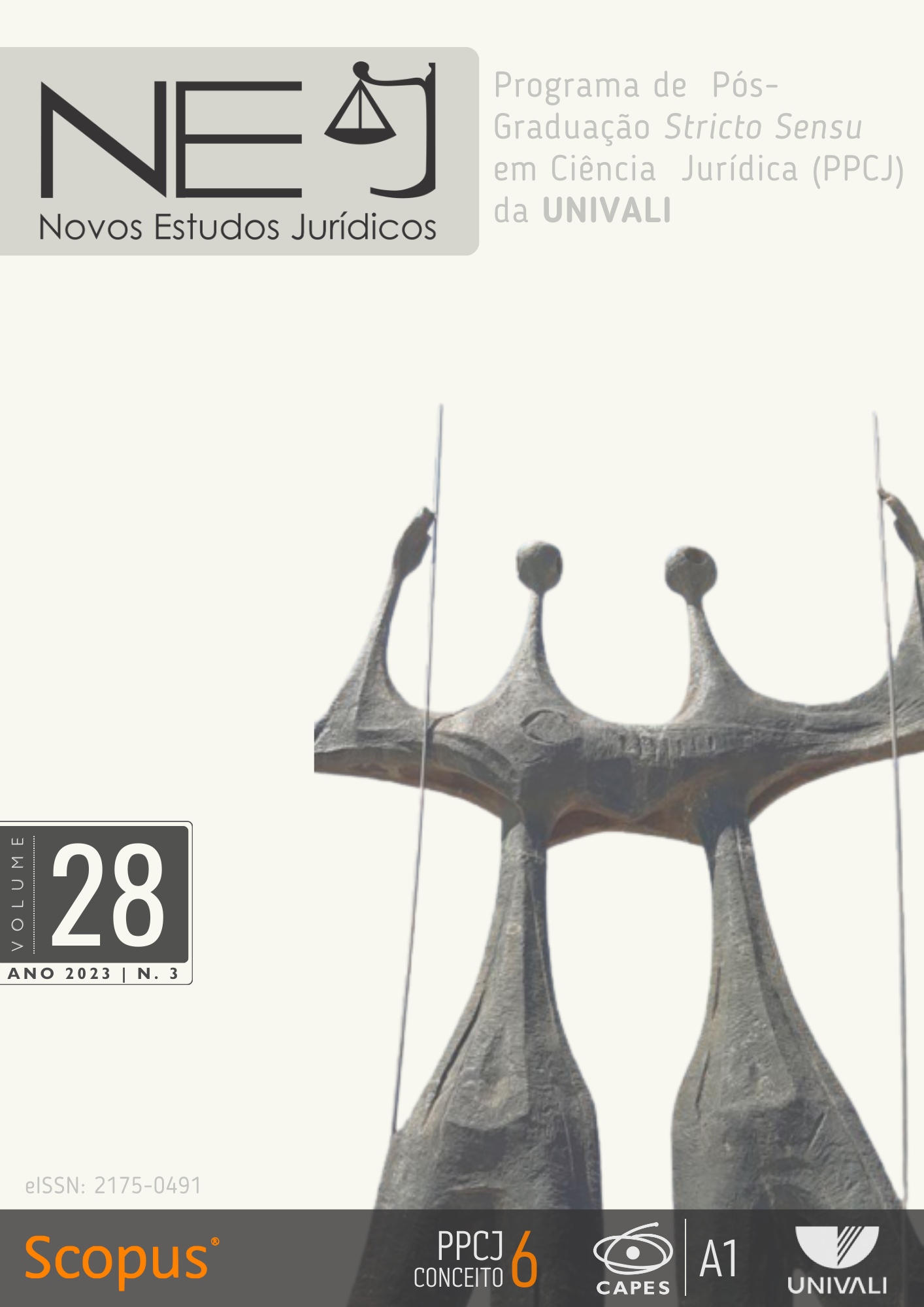CHINA EN LA ENCRUCIJADA: CÓMO CHINA ESTÁ AVANZANDO EN LA INNOVACIÓN
DOI:
https://doi.org/10.14210/nej.v28n3.p668-685Palabras clave:
Innovación, China, Educación públicaResumen
Contextualización: Este artículo examina el impulso de China hacia la innovación en la educación pública, sugiriendo que el país está determinado a transformar su sistema educativo en uno que fomente la creatividad como norma y haga de la innovación un resultado consistente y priorizado. Los cambios en las prácticas educativas solo ocurrirán si la idea es consistente y tiene un valor claro para padres, líderes empresariales y educadores. La liderazgo chino está claramente enfocado en hacer que este cambio suceda.
Objetivo: El propósito del artículo es discutir varios elementos clave que pueden facilitar el camino hacia la institucionalización de la innovación dentro del sistema educativo de China. Esto incluye la posibilidad de que China monetice la innovación convirtiéndose en líder en la batalla global por nuevas patentes de diseño, lo que justificaría inversiones sustanciales en la transformación futura de su sistema educativo, desde el jardín de infantes hasta la educación posgraduada.
Metodologia: Se trata de una investigación exploratoria que utiliza el método inductivo y emplea la revisión bibliográfica como técnica para la recolección de datos.
Resultados: El artículo sugiere que, con el apoyo y la orientación adecuados, China está lista para asumir el desafío de fomentar la innovación en un corto período de tiempo. Esto depende de una serie de decisiones sobre cómo se utiliza el espacio, cómo se asignan, entrenan y apoyan a los profesores, y los conceptos y la pedagogía que impulsan el aprendizaje. Apoyar a los profesores en la construcción y gestión de nuevas estructuras que fomenten la innovación es esencial para cambiar la estructura de las escuelas y la enseñanza, enseñar a los estudiantes a ser más creativos, lo cual es crucial para la futura economía de China.
Descargas
Citas
BAIDU COMPANY. Chinese internet learning white paper. The Chinese Journal of ICT in Education, v. 16, n. Suppl, p. 48–49, 2015.
COTTER, K. N.; PRETZ, J. E.; KAUFMAN, J. C. Applicant Extracurricular Involvement Predicts Creativity Better Than Traditional Admissions Factors. Psychology of Aesthetics, Creativity, and the Arts, v. 24, p. 250-267, 2015. DOI: 10.1037/A0039831 DOI: https://doi.org/10.1037/e549472014-001
DACEY, J. S.; LENNON, K. H. Understanding creativity: The interplay of biological, psychological, and social factors. San Francisco: Jossey-Bass, 1998. p. 69.
DELLO-IACOVO, Belinda. Curriculum Reform and "Quality Education" in China: An Overview. International Journal of Educational Development, v. 29, n. 3, p. 241-249, 2009. DOI: https://doi.org/10.1016/j.ijedudev.2008.02.008
GAJDA, A.; BEGHETTO, R. A.; KARWOWSKI, M. Exploring creative learning in the classroom: A multi-method approach. Thinking Skills and Creativity, v. 24, p. 250-267, 2017. Disponível em: https://doi.org/10.1016/j.tsc.2017.04.002 DOI: https://doi.org/10.1016/j.tsc.2017.04.002
HUANG, F. Building the world-class research universities: A case study of China. Higher Education, v. 70, n. 2, p. 203–215, 2015. DOI: https://doi.org/10.1007/s10734-015-9876-8
JIANG, Zhaochen. Literacy teaching by rhyming text. International Conference of Chinese Education, p. 272–280, 2002.
KELLOGG, R. P. China’s brain gain? Attitudes and future plans of overseas. Journal of Chinese Overseas, v. 8, n. 1, p. 83–104, 2012. DOI: https://doi.org/10.1163/179325412X634319
LAI, M.; LO, L. N. K. Struggling to balance various stakeholders’ perceptions: The work life of ideo-political education teachers in China. Higher Education, v. 62, n. 3, p. 333–349, 2011. DOI: https://doi.org/10.1007/s10734-010-9391-x
LI, D.; REMEDIOS, L.; CLARKE, D. Chinese students’ groupwork practices and experiences in China. Higher Education, v. 68, n. 2, p. 227–241, 2014. DOI: https://doi.org/10.1007/s10734-013-9704-y
LOVELESS, T. Lessons from the PISA-Shanghai controversy. Washington, DD: Brookings Institution, Brown Center on Education Policy, 2014.
LUNDVALL, B.A. National Systems of Innovation: Towards a Theory of Innovation and Interactive Learning. London: Pinter Publishers, 1992.
MASHKINA, O. A. China: prospects for innovation and education. História e Modernidade, n. 2, p. 144–158, 2010.
MINISTRY OF EDUCATION OF THE PEOPLE’S REPUBLIC OF CHINA (MOE). Jiaoyubu bangongting guanyu tuijin shishi gaoxiao sixiang zhengzhi lilunke tepin jiaoshou zhidu de tongzhi. 2016. Disponível em: <http://www.moe.edu.cn/srcsite/A13/moe_772/201604/t20160412_237724.html>. Acesso em: 15 mar. 2024.
MOK, K.-H. Globalization and educational restructuring: University merging and changing governance in China. Higher Education, v. 50, n. 1, p. 57-88, 2005. Disponível em: http://www.jstor.org/stable/25068089. R DOI: https://doi.org/10.1007/s10734-004-6347-z
OECD. PISA 2012 results. Creative problem solving: Students’ skills in tackling real-life problems. Paris: OECD, 2014. DOI: https://doi.org/10.1787/9789264208070-en
REN, Y. Q.; LU, B. R. The top-level design of ICT in education during the thirteenth five-year plan. e-Education Research, v. 36, n. 6, p. 5–14, 2015.
SNEDDON, Michael. Visões Internas: Uma olhada no enorme aumento nos depósitos de patentes na China. Intellectual Property Watch, 22 abr. 2015.
STEVENSON, Harold W.; STIGLER, James W. The learning gap: Why our schools are failing and what we can learn from Japanese and Chinese education. New York: Summit Books, 1992
TAUBMAN-REZAKHANLOU, Jahan Harry. hina Continues High Growth in IO Filings, But is There More To The Story. Intellectual Property Watch, 04 fev. 2016.
ZHAO, Yong. Aprendizes de classe mundial: Educando estudantes criativos e empreendedores. Thousand Oaks: Corwin, 2012.
Descargas
Publicado
Cómo citar
Número
Sección
Licencia
Na qualidade de autor(es) da colaboração, original e inédita, sobre o qual me(nos) responsabilizo(amos) civil e penalmente pelo seu conteúdo, após ter lido as diretrizes para autores, concordado(amos) plenamente com as Políticas Editorias da Revista Novos Estudos Jurídicos - NEJ e autorizo(amos) a publicação na rede mundial de computadores (Internet), permitindo, também, que sua linguagem possa ser reformulada, caso seja necessário, sem que me(nos) seja devido qualquer pagamento a título de direitos autorais, podendo qualquer interessado acessá-lo e/ou reproduzi-lo mediante download, desde que a reprodução e/ou publicação obedeçam as normas da ABNT e tenham a finalidade exclusiva de uso por quem a consulta a título de divulgação da produção acadêmico científico.





























